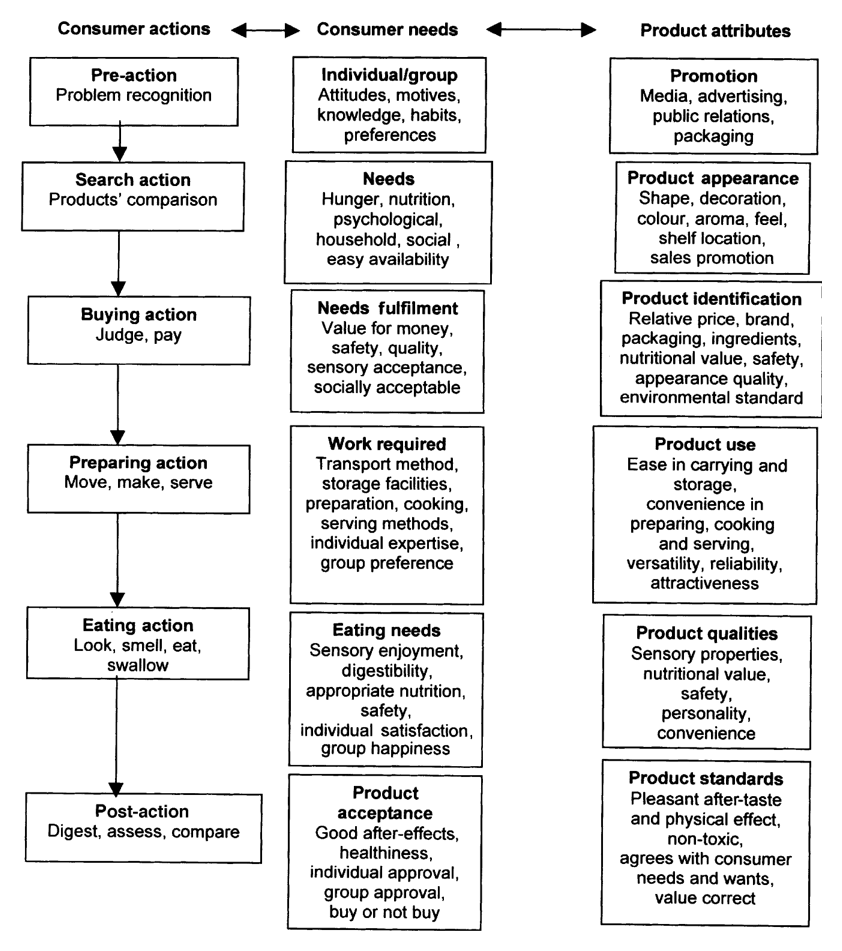FOOD
PRODUCT DEVELOPMENT
Mary Earle, Richard Earle and Allan Anderson |
| Loading
|
|
||||
|
|
Part
2, Chapter 5
The consumer in product development 5.1.3 Consumer/food relationship The consumer and food relationship is important throughout the food behaviour process; both the food and the consumer have attributes and it is the compatibility of these attributes that determines acceptance or rejection of a food product. In product development, consumers' needs and the related products' attributes need to be considered together at each stage of the food behaviour process as shown in Fig.
5.3 (Schaffner et al., 1998).
 Fig. 5.3 Comparing consumer needs and product attributes in the food behaviour process. (- click to enlarge) The consumer decision in the post-action to not buy the new product, if widespread, will necessitate a redesign of the product. If it is decided just to drop the product, it is important to determine what caused the failure in the consumer/food product relationship and to store all the information for a later time. The consumer/food product relationship is the basic relationship in food product development and it is important that it is considered in all the steps in the food behaviour process. There are three levels of understanding the consumer/product relationship: as an individual product, as a meal and as an eating pattern. The bar of chocolate could be eaten alone, but many food products are eaten together. For example the hamburger is in a bun with lettuce, tomato, a sauce, and it is sold with French fries and a soft drink. Sometimes this juxtaposition of foods is ignored in product development. The consumers also have eating patterns, which do change with time, and the foods have to fit into this eating pattern. So the consumer behaviour is more complex than the single product action model, as each model is interrelated with other product models. The success of the takeaway industry is based on its understanding of these interrelationships. In some cases it has also been used in the supermarkets, for example relating pasta and meat to sauces.
|
|
 |